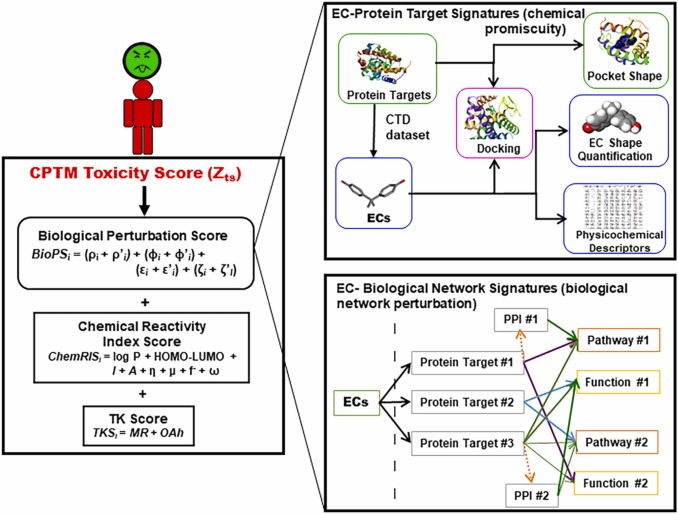Fig. 1 Fig. 1. Schematic of the chemo-phenotypic toxicity measurement (CPTM) for the generation of toxicity scores (Zts). An environmental chemical (EC) is given a toxicity score based on the combination of biological, chemical, and toxico-kinetic terms (see Section 14). Tox-TMFS is used to predict novel EC-protein target associations in addition to experimentally determined associations obtained from the Comparative Toxicogenomics Database (CTD). The chemical promiscuity score is the total number of unique known and predicted targets. ECs are then associated with higher-order biological effects through those targets, which include protein-protein interactions, pathways, and functions. The number of these elements contributes to an EC’s biological perturbation score. The toxicokinetic (TK) score is determined by the total number of potential reactions that an EC can undergo into metabolites and the predicted percent human oral absorption. The chemical reactivity index is composed of physico-toxico chemical properties associated with general mechanisms of toxicity, which include: log P, electrophilic Fukui index (f-), HOMO-LUMO energy band gap, electron affinity, ionization potential, chemical hardness, chemical potential, and electrophilicity index. The individual score terms are combined to give a comprehensive toxicity score (Zts) to rank ECs, where higher scores denote greater toxicity.
Image
Figure Caption
Acknowledgments
This image is the copyrighted work of the attributed author or publisher, and
ZFIN has permission only to display this image to its users.
Additional permissions should be obtained from the applicable author or publisher of the image.
Full text @ Ecotoxicol. Environ. Saf.

